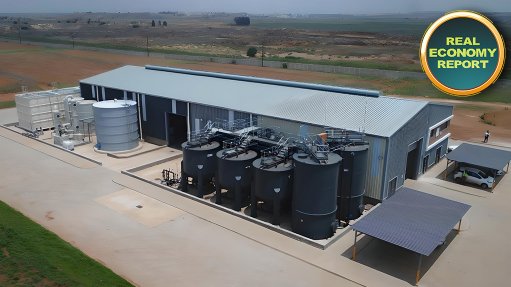Managing Customers in a Debt Crisis
This article has been supplied as a media statement and is not written by Creamer Media. It may be available only for a limited time on this website.
The past year has undoubtedly hit hard at consumers’ wallets with the annual inflation rate rising up to 7.2%, far above the Reserve Bank’s target range of 3% to 6%. This makes it imperative for lenders to re-evaluate debt collections and customer risk management strategies.
With insights gained after the four most recent global recessions of 1975, 1982, 1991, and 2008 and the Covid-19 pandemic, it is clear that many diligent customers become economic victims when financial systems experience major turbulence. This means that if they fall behind on their payments, there needs to be a more guarded approach to penalizing them as their circumstances are likely to improve with the return to normalcy and as they make their way back to financial well-being.
For economic victims, the average return to financial good period was just 9 months in the last recession, compared to a normal average of 2.5 years. This calls for a change in strategies, policies, and treatments.
According to FICO Advisor Shivani Landie, one of the important lessons of debt management in a financial crisis is the need to understand client payment hierarchies.
“Because of moratoriums placed on secured lending at the height of the Covid pandemic, payment hierarchies changed as people moved towards defense credit such as overdrafts, revolving credit, credit cards, loans, and By Now Pay Later (BNPL). Now that the moratoriums have expired since people need roofs over their heads in order to work from home, or vehicles to travel to work, there is a huge strain on unsecured portfolios. This makes it important to identify how customer payment hierarchies change and how to cater to them,” says Landie.
A key factor in driving collections tactics and performance today is regulation, particularly IFRS 9. Under pre-2018 accounting regimes, defaults were only reported as they happened. The discipline behind IFRS 9 imposed a duty of care on lenders to proactively anticipate and plan for expected credit losses and avoid debt collections well in advance.
IFRS 9, Collections Strategy, Delinquency and Risk
As it now stands, IFRS 9 has split lenders into two camps. Some took it as an opportunity to look more holistically and pre-emptively at the operational back-office convergence between informed collections strategies, risk, and finance. Others opted for a tactical stop-gap to meet the regulatory demands of compliance, involving more manual checking and work during every reporting cycle.
Any institution belonging to the latter camp may have also unwittingly reduced their chances of turning the regulation into a handy growth and efficiency opportunity. This was the opportunity to digitize risk management, delinquency, and collections functions and make the most of risk-adjusted performance measures.
Six Considerations for Creditors
Creditors need to hone their collections strategies and process skillsets because IFRS 9 will come at a cost for the inefficient.
Retaining market share is critical. Creditors know they risk losing good customers that may offer enormous lifetime potential if they aren’t properly supported. But with the wrong treatments, poor support, or late action, customers will go elsewhere. And once a customer has been lost, they’ve generally been lost for good.
Keep a careful eye on the cost of collections. It’s always worth noting that the moment a customer goes into collections their account will immediately be between 30% and 60% less profitable. If the account stays in collections for more than a month, there’s a direct risk it will have to retain an impairment, with the lost profit remaining on the lenders’ balance sheet until the product is repaid in full. The knock-on impact is a double whammy as it further reduces future forecasted profits, given a proportion of the credit balance is subsequently reported as a forecasted loss.
Plug in to quick wins at speed and scale. A slew of additional real-time data sources and insights are readily available, from public records to traditional credit bureaux and alternative data. The trick is converting all the information into meaningful insights that can drive well-informed action.
Many lenders still face challenges in achieving a comprehensive customer-centric view from their internal data. Successful collections strategies are underpinned by access to as wide a range of data as possible — especially real-time transactional insights, credit utilization, income and spending behaviour. The ability to quickly assess where financial difficulties are coming from and in what shape, select the best way to engage with the customer, and proactively offer the most appropriate help, are all vital.
It’s a tricky balancing act. Pre-collections strategies are arguably the hardest place to get customer communications right. Too little, too late, and its costs. Too much, too soon and the customer risks being alienated by a perceived overreaction or simply become suspicious. Neither ends happily.
All the key requirements outlined above, and the capabilities required to deliver them, are proven components of the FICO Platform. It enables customers to manage complex data flows, drives deep customer insight, and understanding, and makes real-time decisions on appropriate treatments and engagement approaches for customers. It improves customer interactions through digital and traditional channels, with optimized approaches that consistently deliver the most appropriate business and customer outcomes.
Comments
Announcements
What's On
Subscribe to improve your user experience...
Option 1 (equivalent of R125 a month):
Receive a weekly copy of Creamer Media's Engineering News & Mining Weekly magazine
(print copy for those in South Africa and e-magazine for those outside of South Africa)
Receive daily email newsletters
Access to full search results
Access archive of magazine back copies
Access to Projects in Progress
Access to ONE Research Report of your choice in PDF format
Option 2 (equivalent of R375 a month):
All benefits from Option 1
PLUS
Access to Creamer Media's Research Channel Africa for ALL Research Reports, in PDF format, on various industrial and mining sectors
including Electricity; Water; Energy Transition; Hydrogen; Roads, Rail and Ports; Coal; Gold; Platinum; Battery Metals; etc.
Already a subscriber?
Forgotten your password?
Receive weekly copy of Creamer Media's Engineering News & Mining Weekly magazine (print copy for those in South Africa and e-magazine for those outside of South Africa)
➕
Recieve daily email newsletters
➕
Access to full search results
➕
Access archive of magazine back copies
➕
Access to Projects in Progress
➕
Access to ONE Research Report of your choice in PDF format
RESEARCH CHANNEL AFRICA
R4500 (equivalent of R375 a month)
SUBSCRIBEAll benefits from Option 1
➕
Access to Creamer Media's Research Channel Africa for ALL Research Reports on various industrial and mining sectors, in PDF format, including on:
Electricity
➕
Water
➕
Energy Transition
➕
Hydrogen
➕
Roads, Rail and Ports
➕
Coal
➕
Gold
➕
Platinum
➕
Battery Metals
➕
etc.
Receive all benefits from Option 1 or Option 2 delivered to numerous people at your company
➕
Multiple User names and Passwords for simultaneous log-ins
➕
Intranet integration access to all in your organisation

















